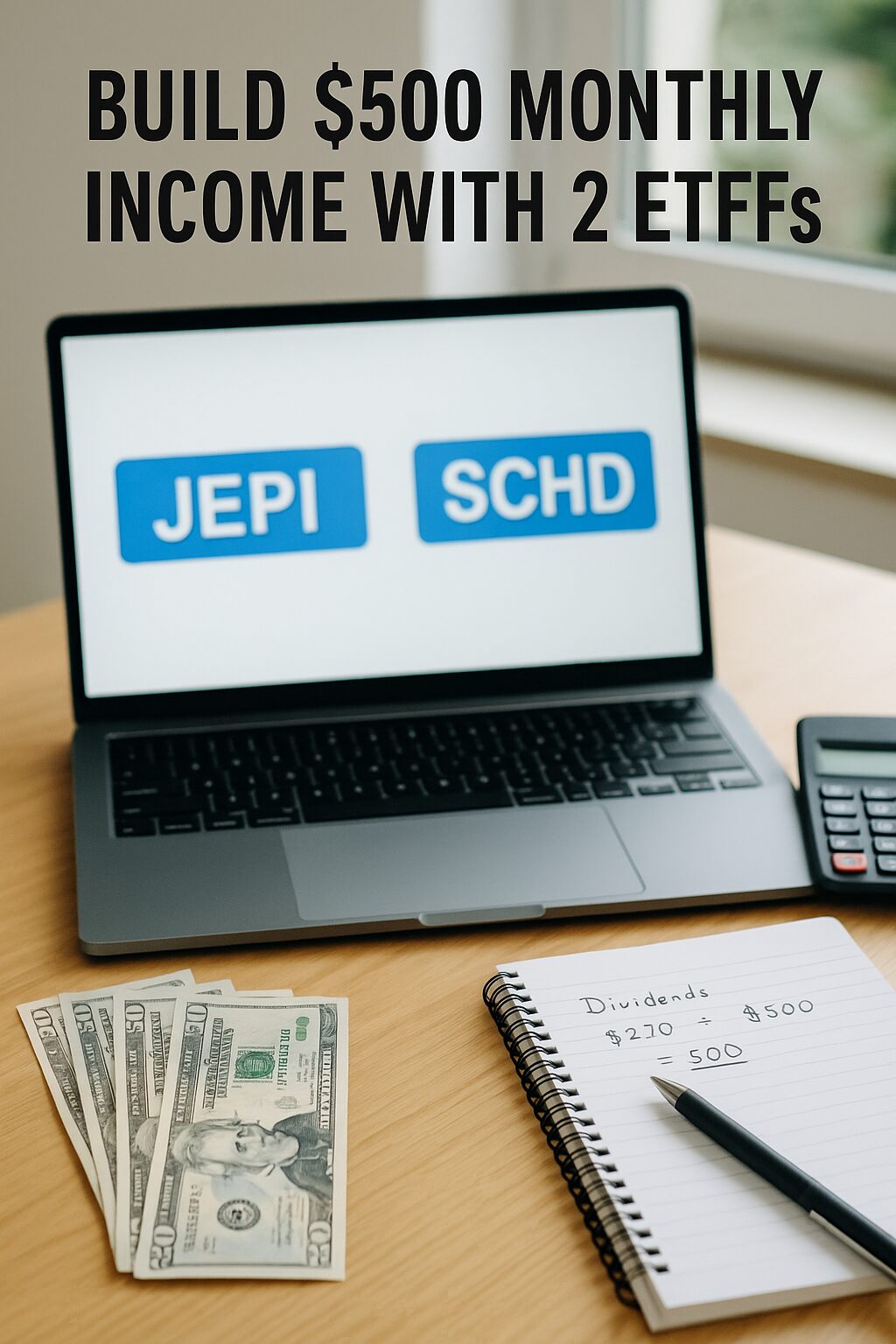Introduction: Why $500 a Month Is a Game-Changer
For many people around the world, earning an extra $500 a month can be life-changing. It could cover rent, groceries, insurance, or be reinvested to accelerate financial freedom. The good news? You don’t need dozens of stocks or complicated strategies to do it. With just two carefully selected ETFs, it’s possible to build a portfolio that generates consistent, passive monthly income — starting in 2025.
In this guide, you’ll learn:
- Which 2 ETFs offer the perfect balance of stability + yield
- How much to invest to reach $500/month
- Real examples of investors earning reliable monthly income
- Tax tips and reinvestment strategies
- How non-U.S. investors can access these ETFs easily
Let’s begin.
1. The 2-ETF Blueprint: What You Need to Know
We’re not talking about risky plays or high-maintenance portfolios. We’re talking about two ETFs that are:
- Low-risk, even in volatile markets
- Monthly or quarterly payers
- Backed by strong dividend performance
- Accessible to international investors
The two ETFs we’ll use are:
- JEPI (JPMorgan Equity Premium Income ETF)
- SCHD (Schwab U.S. Dividend Equity ETF)
2. ETF #1: JEPI – Low-Risk, Monthly Income Powerhouse
JEPI is famous for one thing: it pays investors monthly, and it does it using a unique method — combining blue-chip U.S. stocks with option premiums.
- Dividend Yield (as of 2025): ~7–9%
- Payment Frequency: Monthly
- Strategy: Equity + Covered Calls
Why It Works:
- Provides stability through blue-chip stock exposure
- Generates extra income via selling options
- Great for investors who want consistent cash flow
Real Case:
A retiree invested $65,000 in JEPI and now receives ~$400/month passively — even during market dips. This fund acts like a “monthly paycheck.”
3. ETF #2: SCHD – Stability, Growth, and Quarterly Dividends
SCHD is a dividend growth ETF. Unlike JEPI, it pays quarterly, but its strength is dividend reliability and capital appreciation.
- Dividend Yield (as of 2025): ~3.5–4.5%
- Growth Rate: ~7–10% annually
- Payment Frequency: Quarterly
Why It Works:
- Tracks high-quality U.S. companies with strong balance sheets
- Long-term upward trend + reinvestment power
- Perfect for building wealth + stability
Real Case:
An investor in Germany held $40,000 in SCHD and chose to reinvest dividends. In 5 years, he compounded over $11,000 in growth + income.
4. How Much Do You Need to Invest for $500/Month?
Let’s break it down with simulations:
| Investment | JEPI ($) | SCHD ($) | Monthly Income |
|---|---|---|---|
| $25,000 | 15,000 | 10,000 | ~$140 |
| $50,000 | 30,000 | 20,000 | ~$270 |
| $90,000 | 60,000 | 30,000 | ~$500 |
This is a blended strategy. JEPI gives monthly income. SCHD adds growth and quarterly boosts.
5. Reinvest or Withdraw? The Power of DRIP
DRIP = Dividend Reinvestment Plan
- If you withdraw: You get cash monthly
- If you reinvest: Your income compounds
Example:
Reinvesting JEPI and SCHD income for 3 years with $50,000 can turn into $64,000+ total portfolio value — without adding more money.
6. Taxes: What International Investors Must Know
- U.S. ETFs = 15–30% withholding tax (check tax treaty)
- Use Ireland-domiciled equivalents (ex: SCHD → VUSD via UCITS)
- Some brokers offer auto tax-optimized reinvestment
7. How to Buy These ETFs (Even If You’re Outside the U.S.)
You don’t need a U.S. address. Here’s how:
Best brokers for international access:
- Interactive Brokers
- TD Ameritrade (for residents with U.S. SSN or ITIN)
- DEGIRO (Europe, Asia)
- Moomoo / Tiger Brokers (Singapore, HK)
Set up, deposit, and buy JEPI / SCHD or their equivalents.
8. Step-by-Step Setup Guide
- Choose broker (ex: IBKR)
- Deposit local currency and convert to USD
- Allocate: 60% JEPI, 40% SCHD (or 50/50 for balance)
- Enable DRIP (optional)
- Track payouts monthly and quarterly
- After 12 months, review: reinvest vs. withdraw?
9. Bonus: Add 1 More ETF to Boost Long-Term Growth
Consider adding VTI or VOO for index exposure if you want extra growth.
But remember: 2 ETFs alone are enough for $500/month.
10. Final Thoughts: Who Is This Strategy For?
- Busy professionals who don’t want to trade daily
- International investors seeking USD cash flow
- FIRE-minded individuals who want to build predictable income
- Anyone who wants to simplify investing without sacrificing results
Summary Table
| Portfolio Size | JEPI % | SCHD % | Monthly Income Est. |
|---|---|---|---|
| $25,000 | 60% | 40% | ~$140 |
| $50,000 | 60% | 40% | ~$270 |
| $90,000 | 66% | 34% | ~$500 |
Next Step:
Build your own 2-ETF portfolio using this blueprint, and start receiving passive income — even before 2025 ends.

